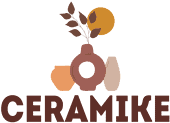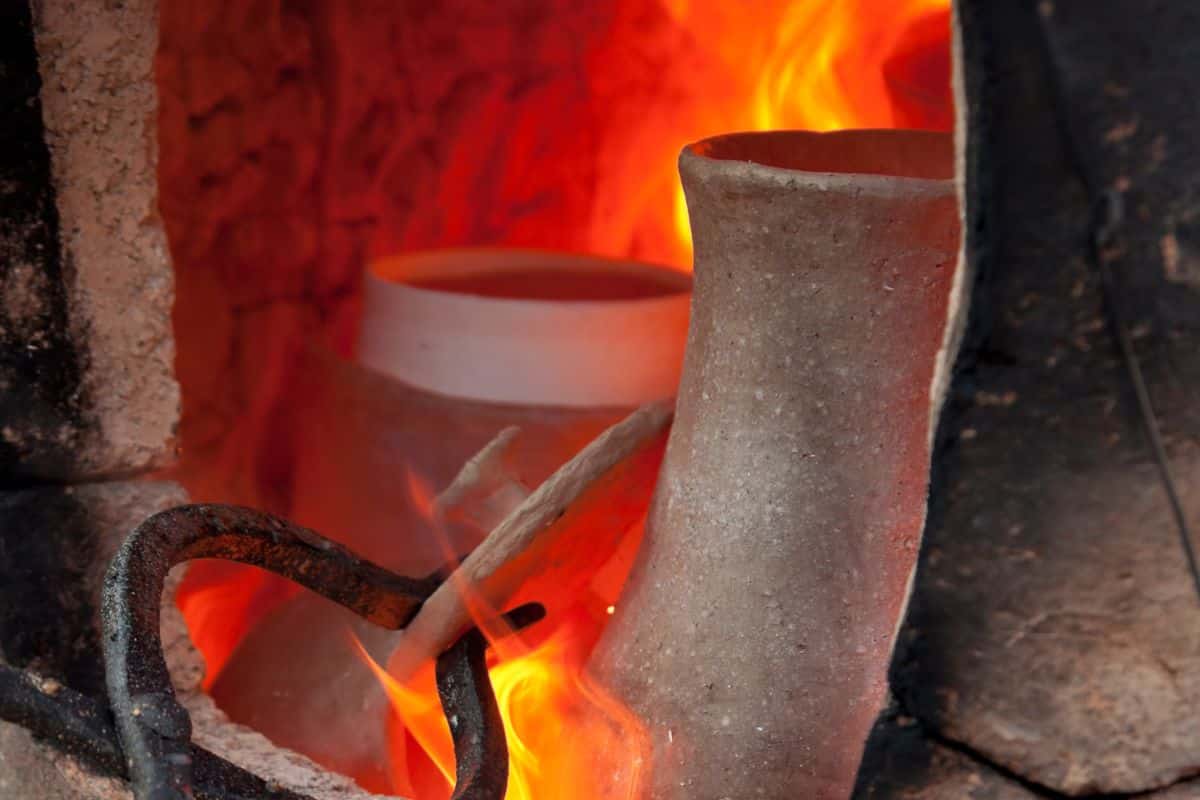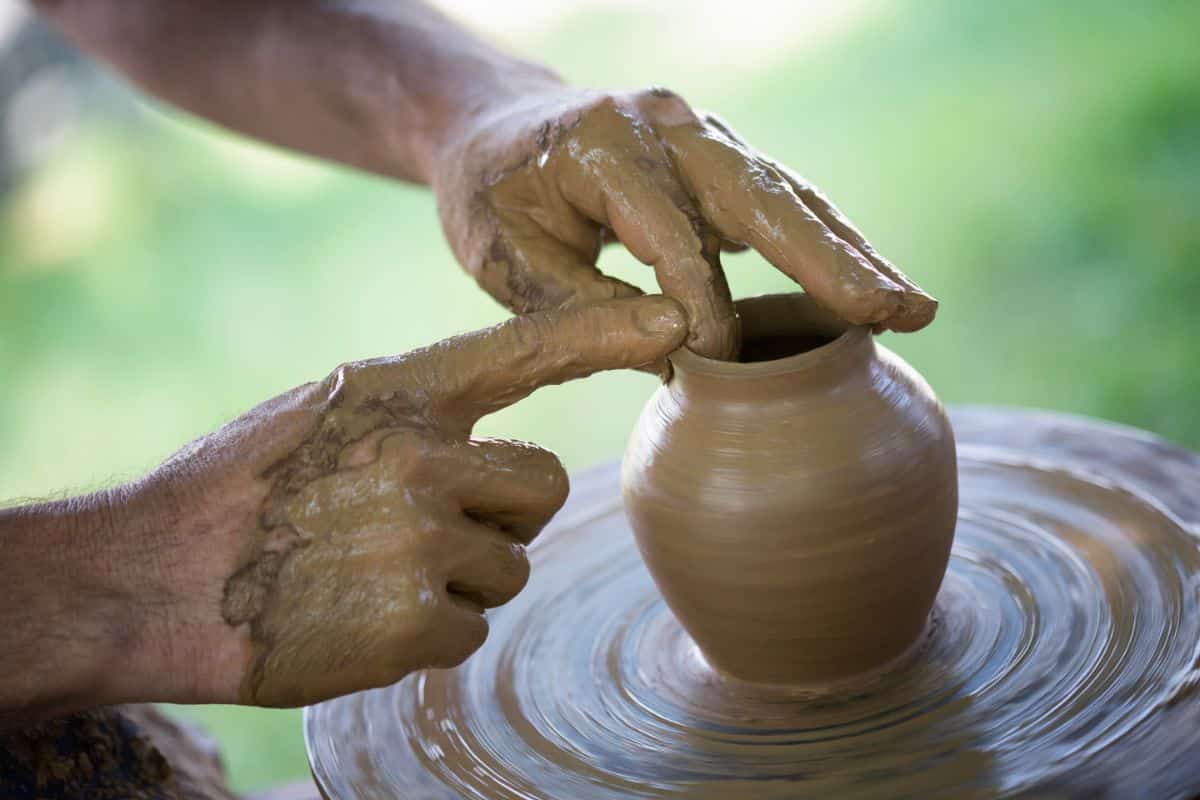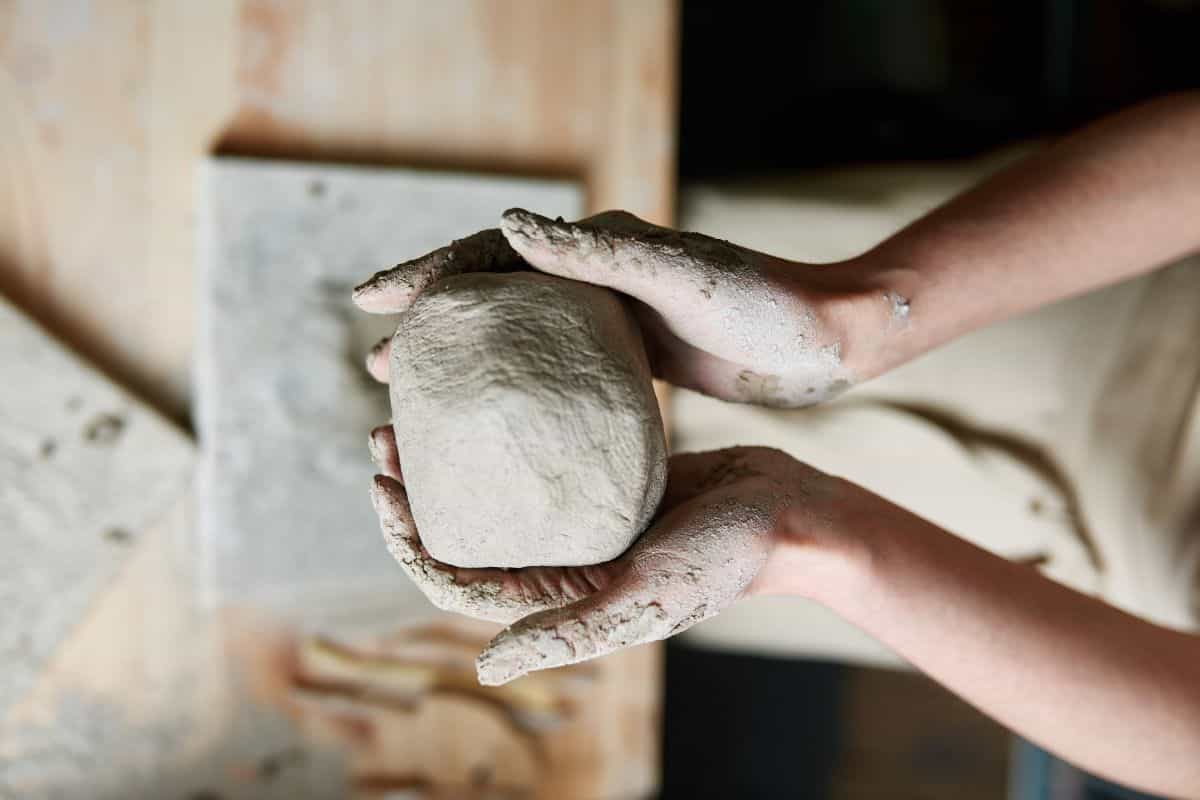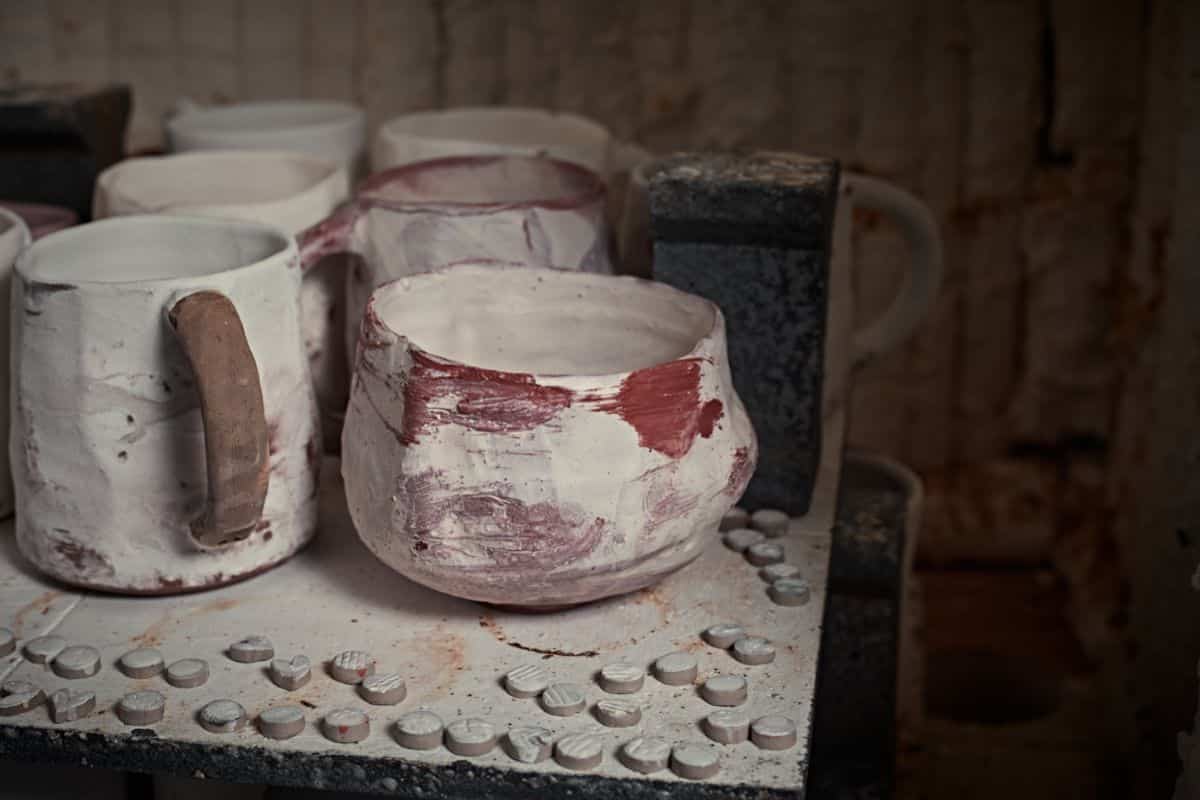There are numerous varieties of ceramic clays on the market.
You risk purchasing the incorrect clay, losing your hard-earned time and money, if you’re inexperienced or ignorant about them.
You may choose the best clay for your upcoming project by being aware of these different varieties of clay.
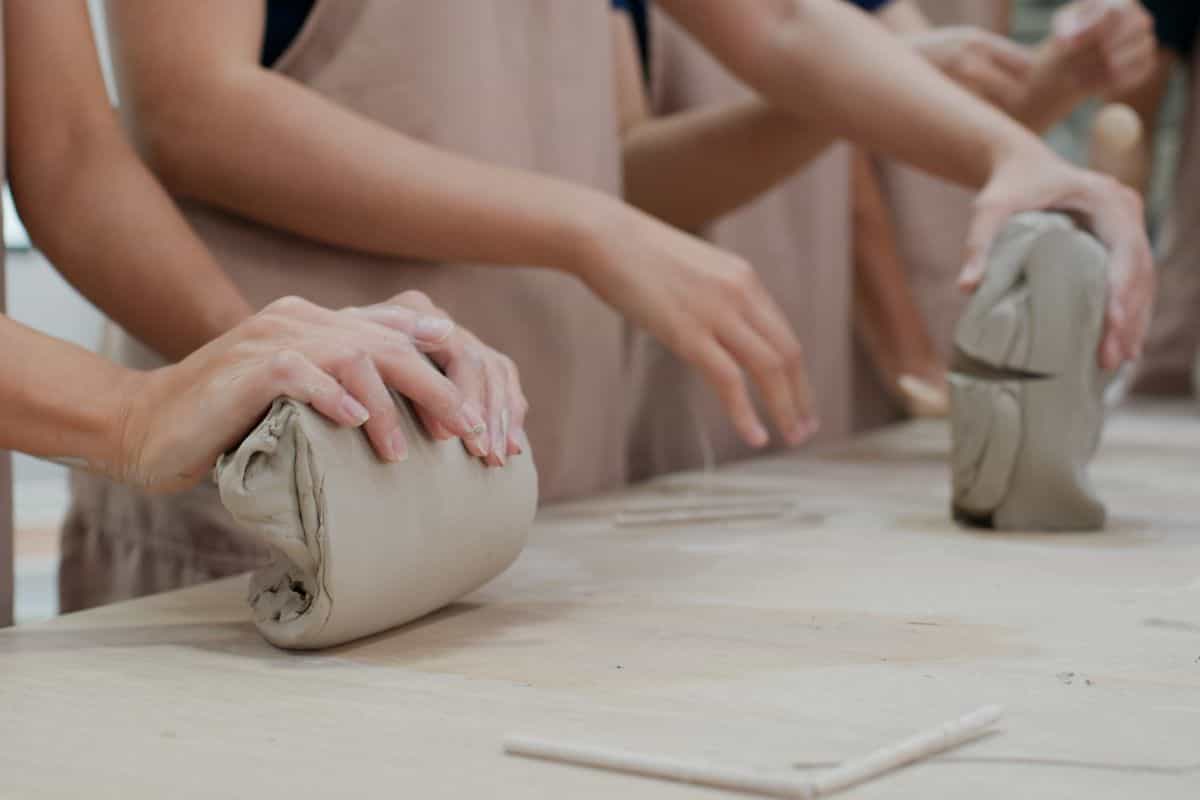
The composition, color, applications, temperature of fire, and outcomes of these many varieties of clay will all be covered in this article.
But first, let’s get acquainted with what clay is, some popular phrases that refer to clays, as well as the four different varieties of clay that are made up of naturally occurring clay minerals.
What Is Clay?
Soft and earthy, clay frequently resembles playing with mud in both appearance and feel.
Mud is primarily composed of water and soil, but clay is a mineral consisting of feldspar.
A set of natural minerals with different concentrations of potassium, sodium, calcium, and/or lithium are together referred to as feldspar.
It makes up around 50% of any and all rocks and is among the most prevalent minerals in the world.
The greatest areas to locate the different clay varieties are where the rocks come into touch with water, air, or steam.
Clay is created as part of the erosion and weathering of these rocks over long periods of time.
This can be found on the bottom of ponds, lakes, and seas as well as in river or stream floodplains.
Clay will persist even after these sources of water ran dry thousands of years ago.
Various impurities which the clay had absorbed throughout its production will determine the color and varieties of clay.
For instance, earthenware is a sort of clay that absorbs iron during the process of manufacture and is often terracotta in color.
Clay-Related Phrases
To help you better grasp how distinct varieties of clay differ from one another, here are some fundamental phrases you should be familiar with.
Plasticity
To put it simply, plasticity refers to the clay’s adaptability or capacity to take on the shape that is wanted.
This is the reason why techniques like pottery, in which clay or other plastic substances are modeled into ceramics or a sculpture, are referred to as plastic arts.
The size of the clay’s particles and its capacity to hold water both affect how plastic it is. It may also depend on how old the clay is. It’s important to choose the correct clay.
The most popular varieties of clay are mostly all plastic, meaning that bending, pressing, or pulling does not cause them to break. When the clay is burned, the plasticity disappears.
Ceramic
We all understand what is meant by the word “ceramic,” and we can distinguish between ceramic and non-ceramic items in our dinnerware cabinet. But what’s the fundamental explanation?
In a nutshell, ceramics are any solidly molded body formed of clay which has lost its elasticity by firing. Ceramics are strong, brittle, and resistant to corrosion.
When clay is burnt, it somewhat melts, lets off several gasses, loses the water it had been holding onto, and creates incredibly strong connections between the particles. Ceramic is the name of this.
The Four Types Of Clay
Now we’ll go through the four distinct types of clay to help you understand which you should use in your pottery projects.
Earthenware
The earliest clays used among potters were earthenware clays, which are also the most popular ones today. It is beginner-friendly and very plastic.
The varieties of clay will vary depending on the characteristics of the soil, region, and environment in which the clay is mined.
Color
Warm hues predominate in earthenware. The wet clay is red, brown, gray, or orange in color.
Earthenware displays orange, brown, red, white, or gray tones after burning. Pottery’s colors become visible after being heated.
The most common hue you can produce is terracotta. With paints and glazes, earthenware is easily embellished.
Uses
For hand-building, wheel throwing, and sculpture, earthenware is employed.
You may make outdoor decorations like sculptures and flowerpots. It is among the most widely used types of clay for new potters.
Firing Temperature
This type of clay tends to fire at the lowest temperatures when compared to other forms of clay, giving pottery the desired toughness.
Clay is burnt at lower temperatures to create earthenware, usually approximately 1945°F (1,063°C) at Cone 4 to 1828°F (998 °C) at Cone 6.
Earthenware is porous after firing (non-vitreous). It takes up at least 7% of moisture (water).
Earthenware is rather soft and could be scraped with a sharp item even after being burned.
Ball
The most flexible clays are ball clays, which also have a very low mineral impurity content. In addition to quartz and kaolinite, they also have between 10 and 25 percent mica.
Natural deposits or sediments with very fine minerals are where ball clays are found. Ball clays can also contain substances like lignite.
Color
When fired, ball clays lose color. Ball clays are gray when they are in the greenware stage. They turn a light buff tint after shooting.
When fired properly, they provide a delicate white color that is well-liked by potters.
Uses
Ball clays are frequently used for tiled floors, toilets, vases, and dinnerware due to its higher plastic and strong binding qualities.
Ball clay on its own is frequently too fine and slick for usage.
Although it is mostly used for slip casting and also as an addition to other clay bodies, it can be utilized for wheel throwing.
Firing Temperature
Ball clays harden following a Cone 10 firing at a temperature of 2345°F (1285°C).
They have a serious drawback, and that occurs upon firing. Ball clays have significant firing-related shrinkage.
So you can’t utilize ball clay by itself unless you already have the necessary expertise or a big enough kiln.
When combined with other clays, such as stoneware and earthenware, ball clay is the ideal substance to utilize for pottery.
Stoneware
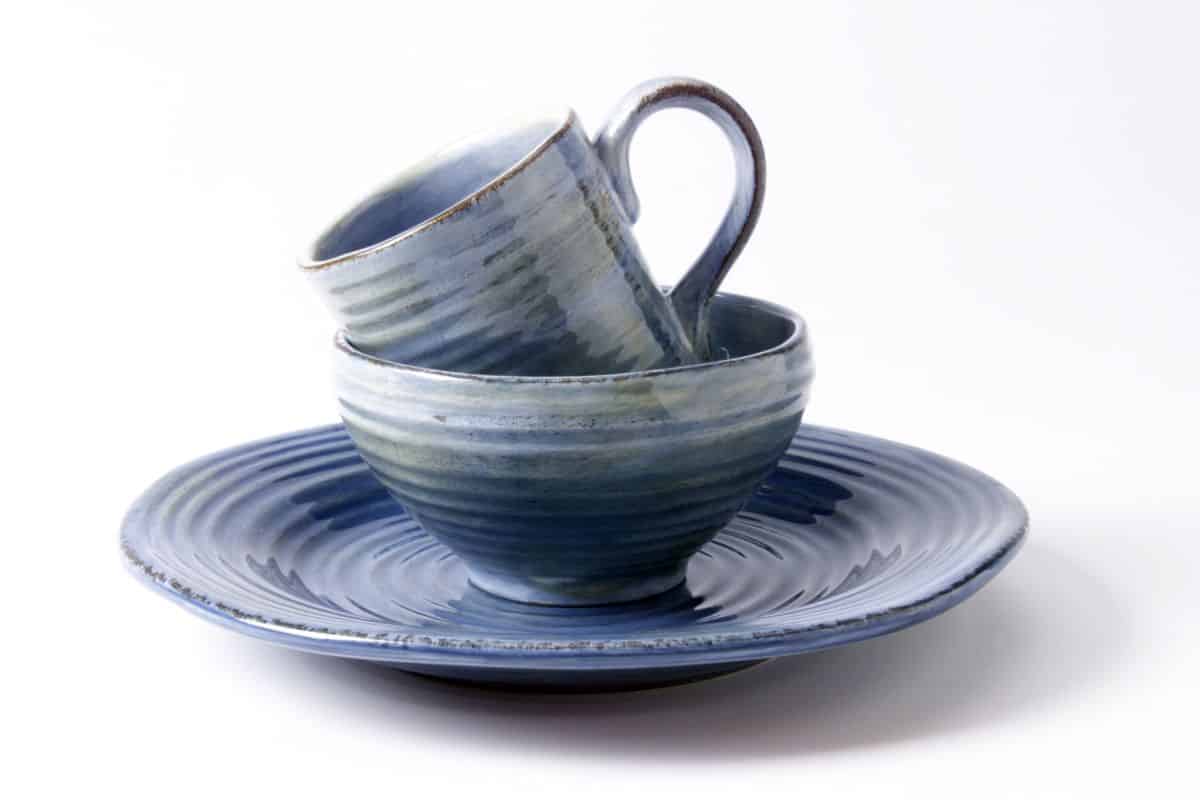
Stoneware clays are hard, nonporous, and just slightly flexible.
Because of the way it resembles stone, it got its name. Instead of being kaolin-based, stoneware clay is mostly made of ball clay.
Color
When wet, they can range in hue from white to gray to even brown. Kaolinite is a component in stoneware clays, along with trace amounts of quartz and mica.
Smectite and illite are also frequently discovered. The temperature and kind of fire also have an impact on color.
Uses
Enamels, glazes, and other types of paint can be applied to this type of clay without difficulty.
Consequently, stoneware clay is a preferred clay for usage in dinnerware. used primarily for tossing wheels and creating hands.
Firing Temperature
High temperatures, varying from 2,167°F (1,186°C) at Cone 5 to Cone 10 2,345°F (1,285°C), are used to fire stoneware.
Refractory clay of the type called “fire clay” is most frequently seen as an additive.
The temperature at what stoneware clays matures rises as a result of their high heat resistance.
They also add a little roughness to stoneware because they include mineral impurities like iron. After firing, iron frequently leaves black stains on ceramics.
Porcelain
Particularly for dinnerware, porcelain and China ceramics are wildly popular. They are made primarily of pure kaolin, also called “China Clay,” and other substances.
Color
Although porcelains come in a variety of colors, they are all incredibly soft and delicate. They will exhibit a very pale, almost grayish tone at the greenware stage.
They are usually white after fire. Enamels and porcelain glazes can be used solely to provide color; they don’t require glazing to repel liquids.
Uses
The lesser plastic clays are kaolin clays, making them the most difficult to deal with. They burn with intense heat.
Minerals are added to porcelain to promote workability and lower the firing temperature.
Mostly utilized in the production of dinnerware, vases, as well as other decorative items while casting and wheel throwing.
Firing Temperature
The most typical kind of porcelain is hard-paste or “genuine” porcelain. In addition to the kaolin, it typically also contains mica or feldspar.
Cone 10 firings work at really high temperatures (2345°F or 1285°C) and produce true porcelain that is more durable.
The least popular kind of porcelain is soft-paste. It was created in Europe and heated to cooler temperatures at Cone 5 (about 2167 °F or 1186 °C).
The weak porcelain is the soft paste variety. It can be made without a fixed mineral.
This form of kaolin is produced by combining it with quartz, bone ash, soapstone, ball clay, and glass.
Final Thoughts
The four main categories of clay—Earthenware, Ball Clay, Stoneware, and Porcelain—were covered in this article.
These clays vary in terms of their firing temperatures, hues, textures, and intended purposes. even if the impurities in the clays are basically comparable minerals.
The first step in creating pottery is choosing the proper clay. Always start with stoneware or earthenware for beginners.
The clay kinds can all be used, and advanced potters can even mix them to change the plasticity.
You can create your masterpiece with any clay if you have the necessary expertise.
